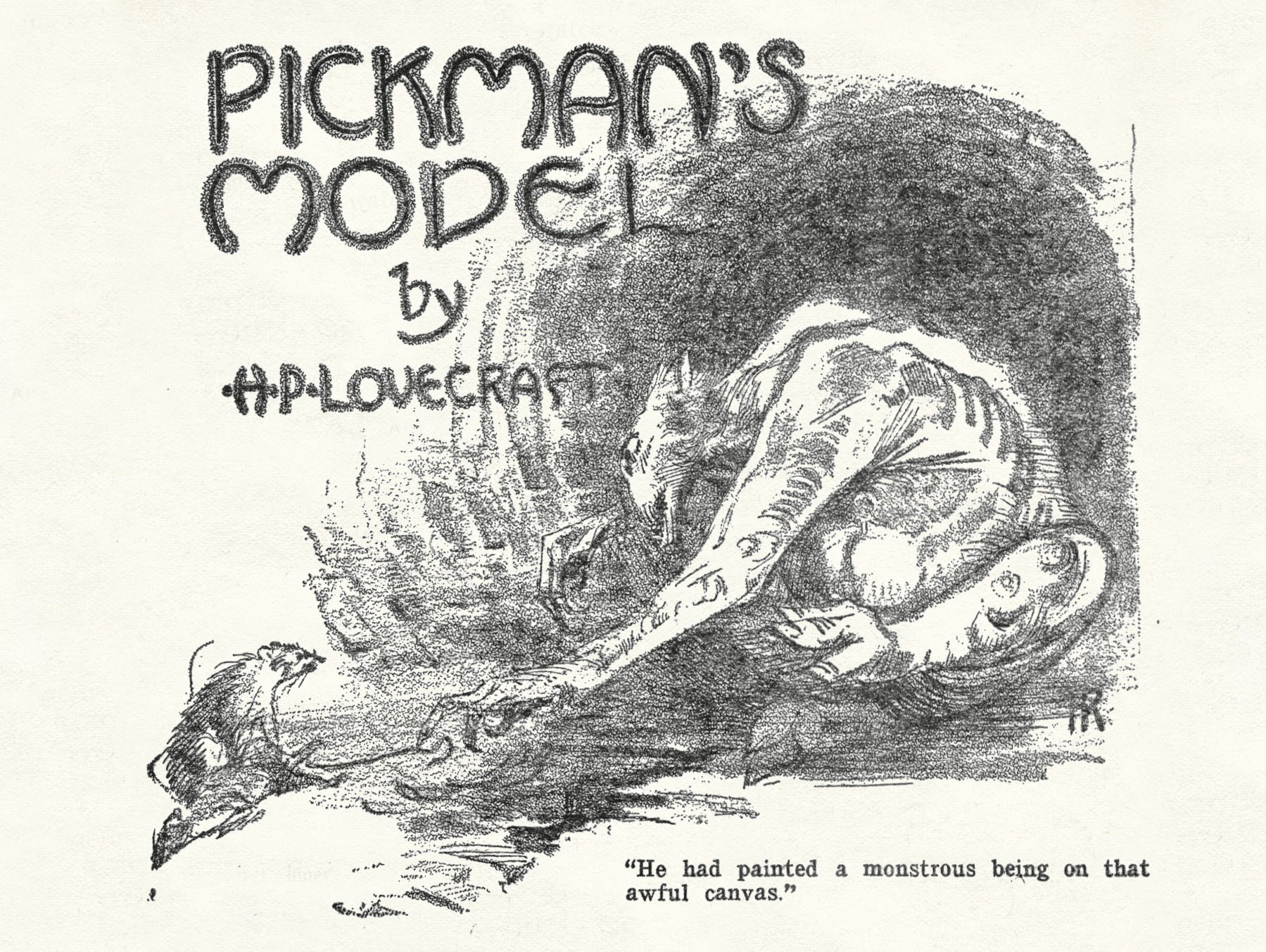Spooky season is upon us, and with it a slew of new ghosts and goblins on the big and small screens. Among them is Guillermo Del Toro’s Cabinet of Curiosities, a horror anthology set to
Spooky season is upon us, and with it a slew of new ghosts and goblins on the big and small screens. Among them is Guillermo Del Toro’s Cabinet of Curiosities, a horror anthology set to release on Netflix two episodes at a time from the twenty-fifth to the twenty-eighth. This is great new for Lovecraft fans, both because Del Toro’s Lovecraftian sensibilities ooze through almost everything he does, but also because this anthology will include two new adaptations of the pulp master’s classic weird tales: Pickman’s Model and Dreams in the Witch House. This week and next we will take a look at these stories in anticipation of the new show.
Pickman’s Model is a medley of classic Lovecraft themes: tainted bloodlines, the occult, mythic monsters who are revealed to actually exist, and the madness of artists. The last theme stands out, and the whole story turn around the disappearance of Richard Upton Pickman. The narrator, known only as “Thurber,” was once a fan of Pickman’s. Something about the lifelike nature of the portraits drew him in, the artist’s incredible ability to capture the true essence of horror. The two became friends, and their friendship endured long after Pickman’s disturbing personality and frightening work caused him to be cast out of polite society.
The story is written as the transcript of a conversation between Thurber and another friend, Eliot. From the beginning, he is nervous and agitated. As he goes on, he drinks glass after glass of liquor, clearly trying to calm himself as he nears the frightening conclusion. This is a man broken by what he saw, or by what it implies.
This theme of works of art or literature that drive men mad is common in Lovecraft, from the murals and hieroglyphs of the Elder Things’ Antarctic city, to idols of Cthulhu or a wax face and hands, to a record found in Australian ruins, to the infamous Necronomicon. In every case, though, it is not the art alone that unhinges the protagonist. In every case, that art implies something horrific about reality. Sometimes it is the existence of abominable evil, and others it is events that have occurred in the character’s own past.
Pickman’s paintings by themselves were enough to horrify and disgust most of polite society. Thurber’s own interest in them seems to have been a sort of sick fascination, unhealthy even at its beginning. But the realism of those paintings implies a model. If such a model existed, it would imply degraded and inhuman creatures and actions hiding just out of sight beneath Boston’s apparently wholesome city life. If that is true, then Thurber’s world is no longer safe. If that is true, there is no dignity in going to your final rest. And if it’s true, there may be no dignity in life, either.
One wonders if the inverse is possible. Might there be a kind of art that implies some unexpected goodness about reality? Could a picture be painted that, rather than driving someone mad, made them sane? Is it possible to write a story that rehinges the unhinged, that uplifts instead of debases–and still draw us with the sort of fascination that brought Thurber into the dark undergrounds of Boston to witness things which ought not be named?
Pickman’s Model is a short story with few characters and few locations. It has been adapted several times before, sometimes professionally as in a 1972 episode of Night Gallery, and sometimes by film students drawn to the challenge of adapting such an unusual story. Chris Lackey’s comedic take, Pickman’s Guest, is particularly fun. It also connects to Lovecraft’s wider mythos, with elements reappearing in his sprawling pseudo-fantasy, pseudo-epic, The Dream-Quest of Unknown Kadath. It has also had an impact on fantasy gaming and on novels like Jim Butcher’s The Dresden Files.
The Del Toro produced version will be released on the twenty-seventh.
